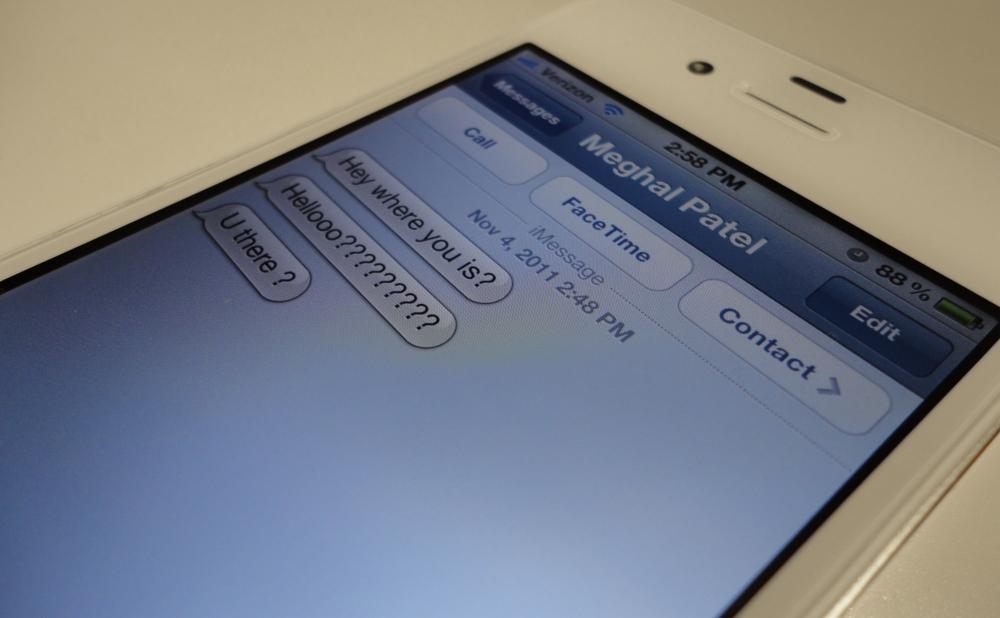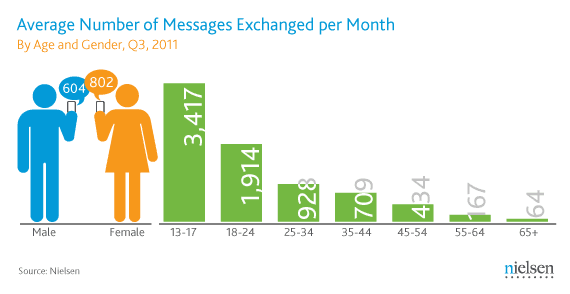
With smartphones, there are no shortages in ways to communicate and stay connected. But even in the days of smartphones, one of the most popular ways to stay connected is by the age-old Short Message Service (SMS), or text messaging. Instead of calling to make dinner plans, the youths – and even adults – of today send text messages to one another.
It's not often that you go anywhere these days and don't see someone texting. Even the dinner table – a place where very few phone calls ever existed – has become a common place for people to fire off text after text. And other text messaging-related problems are on the rise: texting while walking, sleep texting and texting while driving. Clearly, since people are having trouble finding time to put their phones down for all of the texting that's going on, the service has become a staple in cell phone use and 21st century communication.
So just how much do people text?

Teens obviously hold the crown for the most chronic texters. According to a study performed by Nielsen, teens (13-17) are now averaging roughly 3,417 text messages per month. Young adults (18-24) come in second at an average of 1,914 text messages per month. The chart drops off from there: 25-34 year-olds exchange 928 texts on average, 35-44 year-olds exchange 709, 45-54 year-olds exchange 434, 55-64 year-olds exchange 167 and 65 year-olds and up exchange a whopping 64 texts per month on average.
Breaking the data down further, though, Nielsen discovered a pretty interesting fact. When broken down by gender, teenage girls tend to text 1.5 times as much as their male counterparts. And the problem with teen sexting? Apparently, that's more of a misguided belief than anything, according to a recent report from NPR, noted Alicia Eler of ReadWriteWeb.
But why do people text so much? What makes texting such a popular way to communicate? According to the surveyed teens, they find text messaging "easier, faster and a lot more fun," says Eler. In further detail, it's the universality that makes it such an easy way to communicate. Every cell phone is capable of sending SMS, whereas many instant messaging services that offer a very similar experience are OS-specific or smartphone-only. Also, it's much easier to keep conversations private if they're done by text versus voice. Voice calling will never fully die out as vocal is our primary form of communication as humans. But text messaging is largely replacing voice calling via mobile.
Personally, I don't even keep track of my text messaging. I never have since I have always had an unlimited text messaging plan. But on my secondary line alone over the last week, I have sent and received over 250 text messages. If I were to guess how many text I send and receive on average per month, I would say between 1,600 and 2,000 between my two lines.
But I have severely cut my texting back over the last several months. I used to text a lot more than 1,600 per month. Instead, I now use an army of instant messaging services and social networks to do most of my communication. Most of my friends and colleagues talk to me via Twitter, Gtalk and email. Other relatively close friends message me on Facebook before they'll ever text me. And I've even started using Google Voice to text message more here recently, too – it makes it easier for my friends to figure out which number to text when I'm carrying more than one phone.
To be honest, I would like to move away from text messaging entirely, as I've mentioned before. But getting everyone to use a single platform is going to prove harder than anything – nearly impossible. Using multiple instant messaging services not only gets confusing, but it's also annoying not receiving all of my messages from within the same service, or having to switch clients to carry on two conversations. Nonetheless, I'm becoming less reliant on carrier SMS services, which shows some progress at least.
All of this makes me curious, readers. How much do you guys text per month? Is your average near the average of your age group? Or, like me, have you found newer, more integrated ways to communicate to be better?
Image via Nielsen